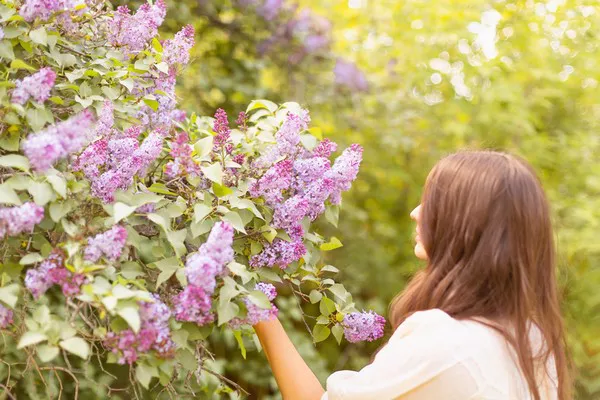Embarking on the journey of planting flowers from seeds is a rewarding endeavor that promises a colorful and vibrant garden. The timing of sowing flowers seeds is crucial for their successful germination and subsequent bloom. Whether you’re a seasoned gardener or a novice with a green thumb, understanding the ideal planting times for different flowers is essential. In this comprehensive guide, we explore the varieties of flowers seeds you can plant now to ensure a flourishing garden in the seasons to come.
Spring Bloomers: Flowers for Immediate Planting
As the days gradually lengthen and temperatures rise, spring becomes an opportune time to sow a variety of flowers seeds. One of the iconic spring bloomers is the cheerful marigold. These hardy flowers come in various colors, adding a burst of vibrancy to gardens and serving as excellent companions to vegetable plants. Planting marigold seeds now ensures a spectacular display in the coming months.
Zinnias are another fantastic choice for spring planting. These heat-tolerant flowers produce stunning, multi-petaled blooms in an array of colors. Known for attracting butterflies, zinnias can be sown directly into the soil, making them a convenient choice for both seasoned and novice gardeners looking to enhance their outdoor spaces.
Summer Delights: Flowers to Sow in Early Spring
For those planning ahead for the summer months, early spring is the ideal time to sow seeds for flowers that thrive in warmer temperatures. Sunflowers, with their towering stems and radiant faces, are quintessential summer flowers. Sow sunflower seeds directly in well-drained soil, providing them ample sunlight for optimal growth. The majestic presence of sunflowers in your garden will undoubtedly be a highlight of the summer season.
Another summer favorite is the cosmos flower. With delicate, feathery foliage and daisy-like blooms, cosmos add an air of grace to any garden. Planting cosmos seeds in early spring allows them to establish robust root systems, ensuring a profusion of blooms as summer unfolds. These flowers are not only visually stunning but also attract beneficial pollinators to your garden.
Fall Wonders: Extending the Flower Blooming Season
While spring and summer are often associated with vibrant blooms, fall offers its own palette of colors, and early spring is the perfect time to start planning for an autumn garden. Pansies, known for their resilience to cooler temperatures, can be sown in early spring for a fall display. These charming flowers come in a variety of hues, injecting life into gardens as temperatures begin to dip.
Another fall bloomer to consider is the aster. Sowing aster seeds in early spring allows for robust plant development, resulting in a profusion of daisy-like blooms in late summer and early fall. Asters are not only visually appealing but also attract butterflies, making them a valuable addition to any pollinator-friendly garden.
See Also: What is the prettiest flower in the world?
Winter Preparations: Flowers for Late Spring Planting
While winter may seem distant, late spring is an excellent time to sow seeds for flowers that thrive in cooler temperatures. Poppies, with their delicate petals and vibrant colors, are well-suited for late spring planting. These hardy flowers can tolerate chilly nights, providing a splash of color to your garden even as winter approaches.
Sweet peas are another winter favorite that benefits from late spring planting. With their enchanting fragrance and a spectrum of colors, sweet peas make for delightful additions to gardens. Planting sweet pea seeds in late spring allows them to establish strong roots before facing colder weather, ensuring a hearty display when winter arrives.
Herbaceous Perennials: Year-Round Flower Elegance
For those seeking a more permanent and perennial display, consider planting herbaceous perennial flowers. These flowers return year after year, adding a consistent touch of elegance to your garden. Daylilies, available in a variety of colors and shapes, are excellent choices for perennial gardens. Planting daylily seeds in early spring allows for robust growth, and these hardy flowers will reward you with blooms for years to come.
Coneflowers, with their distinctive spiky centers and daisy-like petals, are another perennial favorite. Sowing coneflower seeds in early spring ensures well-established plants that can withstand various weather conditions. These flowers not only contribute to the visual appeal of your garden but also attract pollinators, supporting a healthy ecosystem.
Caring for Your Flowers Seeds
Regardless of the flowers seeds you choose to plant, proper care is crucial for their successful germination and growth. Adequate watering, ensuring the soil is well-drained, and providing sufficient sunlight are essential factors to consider. Additionally, it’s advisable to follow the specific planting instructions for each flower variety, as different flowers may have unique requirements.
Mulching around newly planted flowers seeds helps retain moisture, regulate soil temperature, and suppress weed growth. Regular monitoring for pests and diseases ensures the overall health of your garden. As the flowers grow, deadheading—removing spent blooms—encourages continuous blooming and a neater appearance.
Conclusion
In the world of gardening, the question of “Which flowers seeds can I plant now?” is a perennially relevant one. The answer, as we have explored, depends on the season, climate, and the specific flowers you desire. Whether you’re aiming for a burst of spring colors, a summer garden in full bloom, or the elegance of fall and winter flowers, strategic planning and proper care are key to a successful and vibrant garden.
As you embark on the journey of planting flowers seeds, remember that gardening is a dynamic and rewarding process. Experiment with different flowers, observe the unique characteristics of each bloom, and revel in the joy that a well-tended garden brings. With careful planning and a touch of green-thumb magic, your garden can be a year-round haven of color, fragrance, and natural beauty.


